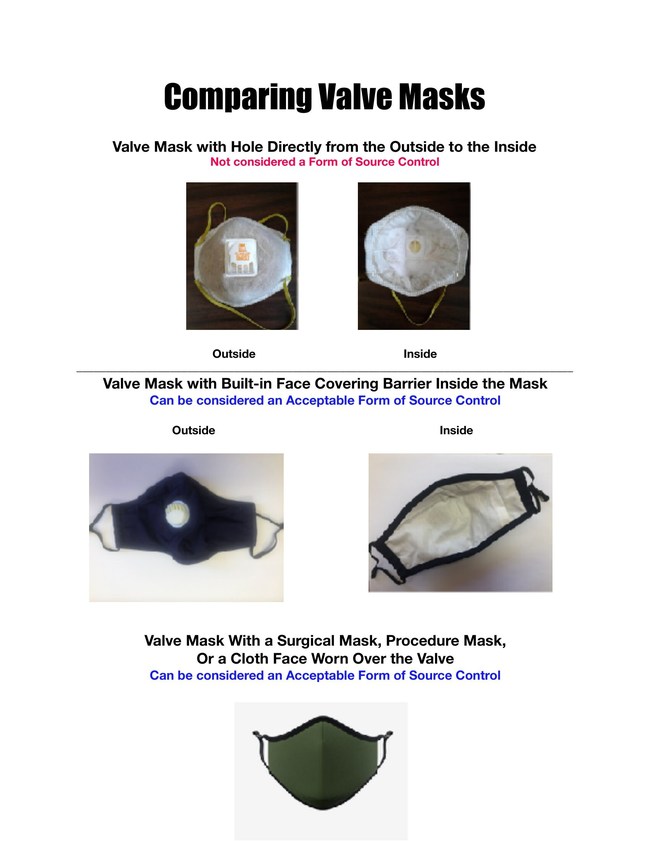
CDC Guides Valve Masks Worn in Conjunction With Cloth Face Coverings Can Protect and Prevent COVID-19
Safer Public Health is a group of volunteers committed to public health safety and provides advice on wearing masks with valves.
“There are different types of valve masks,” explains Greg Donald from Safer Public Health, “some that are an acceptable form of source control and others that are not. The CDC recommends cloth facial coverings as a form of source control. Some valve masks are designed with a built-in facial covering, and these type of valve masks can be considered an acceptable form of source control.”

As stated by the CDC, “Respirators with exhalation valves protect the wearer from SARS-CoV-2, the virus that causes COVID-19,” and if “source control is needed, cover the exhalation valve with a surgical mask, procedure mask, or a cloth face covering that does not interfere with the respirator fit.”
“Masks are recommended as a simple barrier to help prevent respiratory droplets from traveling into the air,” says the CDC. Some masks with valves have a direct hole from the outside to the inside and may not be effective for source control. However, other masks with valves have a built-in cloth facial coverings that cover(s) the exhalation valve on the inside of the mask and acts as a barrier between the wearer and the valve. Thus, these types of valve masks may be considered an acceptable form of source control.
When taking off the mask in situations where the mask is not used, i.e., eating food, the face masks should be carefully handled to reduce contact with the outer surface. Wash your hands after handling or touching a used mask.
Wearing a mask with a lanyard may help prevent the mask from touching outer surfaces and potential contamination. Lanyards with a clasp or release help to make it easy to take on and off.
Masks should be washed after each use.
For more information on safer public health email greg@saferpublichealth.org or visit https://saferpublichealth.org.





